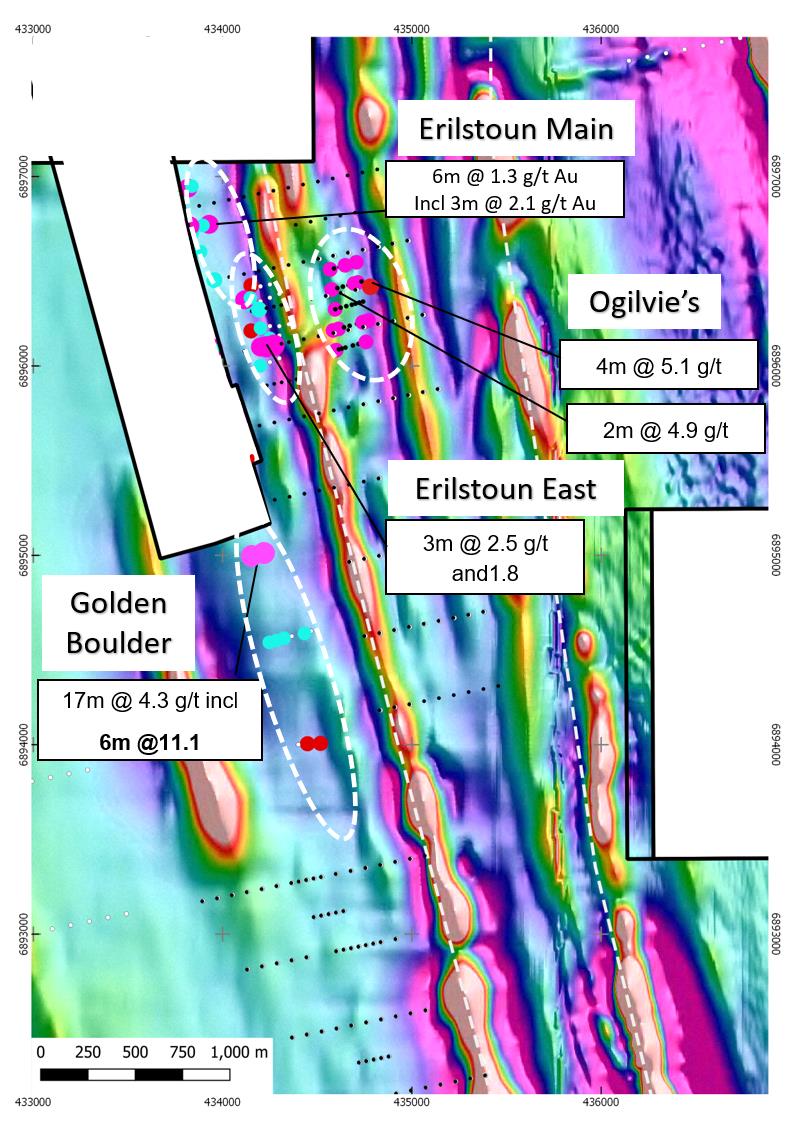Great Southern adds more gold targets to Duketon drill campaign

Pic: Schroptschop / E+ via Getty Images
Great Southern has delineated four drill-ready targets that could extend its current reverse circulation drilling program at the Duketon project near Laverton.
The Ogilvie’s, Golden Boulder, Erlistoun Main Line and Erlistoun East Line targets were identified following a review of historical data that outlined multiple drill intercepts of more than 1 gram per tonne (g/t) gold.
High-grade gold trends were also noted in the drill data along the same mineralised structure that hosts Regis Resources’ 1Moz Rosemont deposit and 0.4Moz Ben Hur deposit.
These new targets add to the Southern Star and One Weight Wonder targets that Great Southern Mining (ASX:GSN) is currently testing with its 4,500m program and land more support to its belief that it is drilling in elephant country.
Chief executive officer Sean Gregory says the company is in the “enviable position” of having multiple drill-ready targets set to go and being on the ground testing them.
“We are currently drilling at Southern Star, then One Weight Wonder and now have the option to extend the drilling program to these exciting targets on the Erilstoun trend,” he added.
“The Erlistoun trend has had no systematic deep drilling on it whatsoever, which is compelling considering just how many deposits in the Duketon Belt are found along these regional mineralised structures.”

New gold targets
Historical drilling at the Ogilvie’s target includes 41 shallow holes with 14 intersecting +1g/t gold with higher grades such as 4m at 5g/t gold and 2m at 4.9g/t gold encountered.
This previous work defined three parallel mineralised gold trends over a 500m strike length.
Mineralisation occurs within gold bearing quartz veins in mafic sheared slivers within a monzogranite porphyry, as identified by renowned geologist Jack Hallberg during mapping of the area.
Both Erlistoun Queen Main Line and Erlistoun Queen East Line targets are located within the Erlistoun Queen trend, which is defined by a multi-lined set of historical workings including over 50 shallow shafts that strike north-northwest.
Historical production is reported to be 1,915t grading 28.6g/t gold during the 1901 to 1955 period.
The Main zone occurs along a basalt-ultramafic contact and mineralisation can be traced for 2km strike length with previous drilling intersecting 8m at 2.9g/t gold from 8m.
The Eastern zone line of workings strikes for 700m in length and is predominantly hosted in a monzogranite porphyry near a chert rich sedimentary contact.
Drilling by Sons of Gwalia in 1995 intersected notable results of 3m at 2.5g/t gold and 3m at 1.8g/t gold within the porphyry.
Great Southern has designed a RC drill program to test mineralisation below these intersections and along strike.
Golden Boulder is an extension of the Erlistoun Main line of workings that continues along strike down to the Goldfinger prospect for a total strike length of 3.6km.
This target is defined by a 100 parts per million down hole arsenic anomaly and 100 parts per billion gold anomaly that strikes directly adjacent to the regional mineralised structure.
Next steps
Great Southern is currently at the start of the 3,500m program at Southern Star that is expected to continue until August.
It will then then mobilise to the One Weight Wonder prospect, which has never undergone deep RC drilling, to complete a plus 1,000m drill program.
Drill design for the Erlistoun targets is complete and a heritage survey over the four main target areas was completed in June.
A program of works for ground disturbing activities at these areas has also been approved by the WA Mines Department.
This article was developed in collaboration with Great Southern Mining, a Stockhead advertiser at the time of publishing.
This article does not constitute financial product advice. You should consider obtaining independent advice before making any financial decisions.
Related Topics

UNLOCK INSIGHTS
Discover the untold stories of emerging ASX stocks.
Daily news and expert analysis, it's free to subscribe.
By proceeding, you confirm you understand that we handle personal information in accordance with our Privacy Policy.








